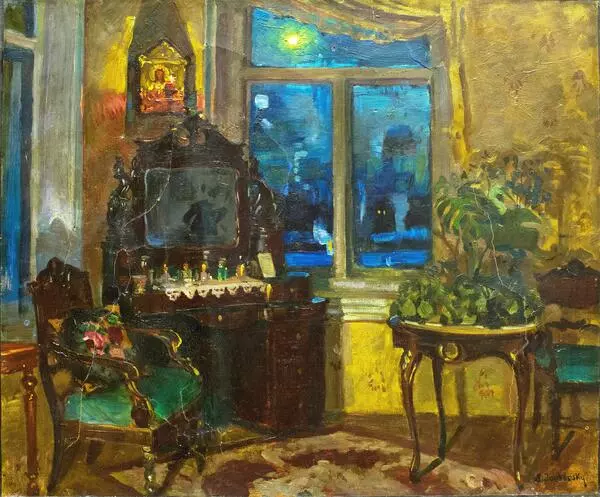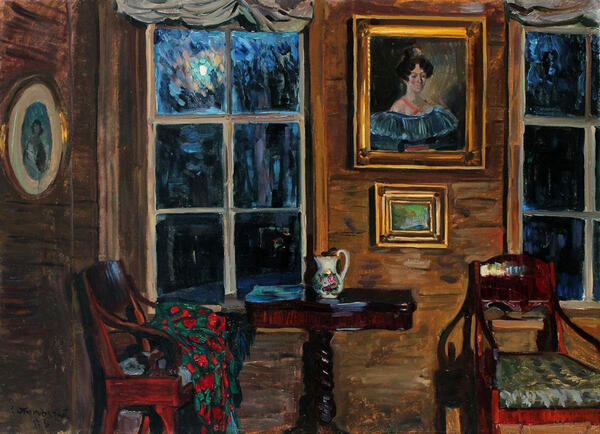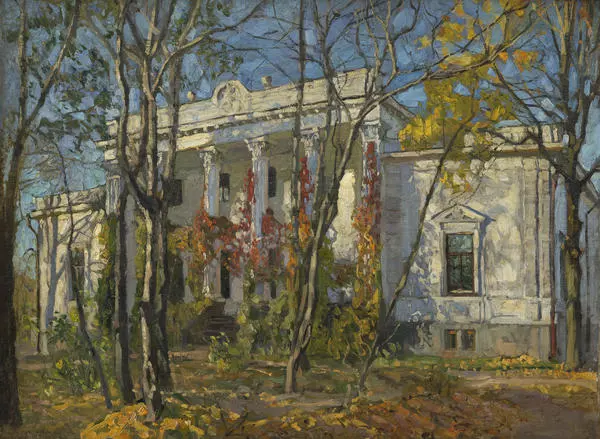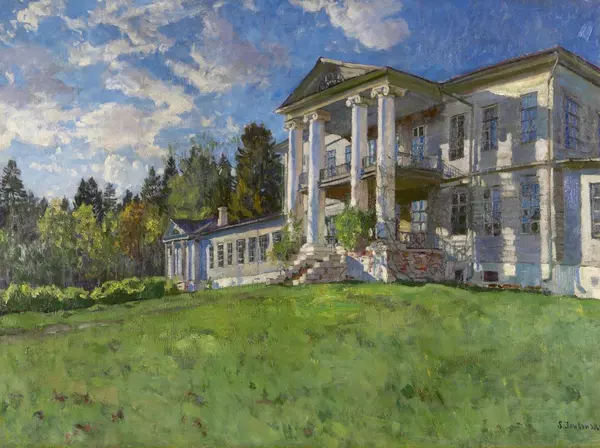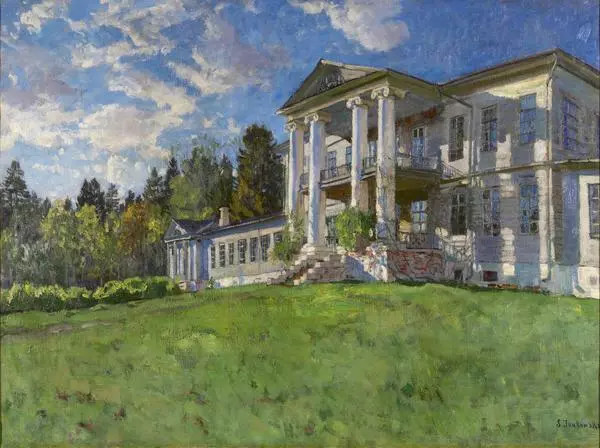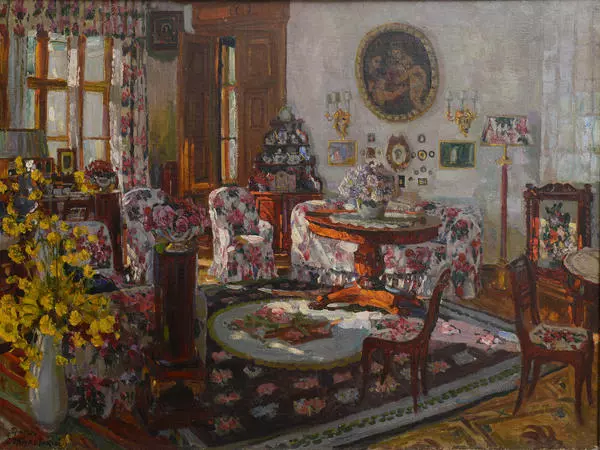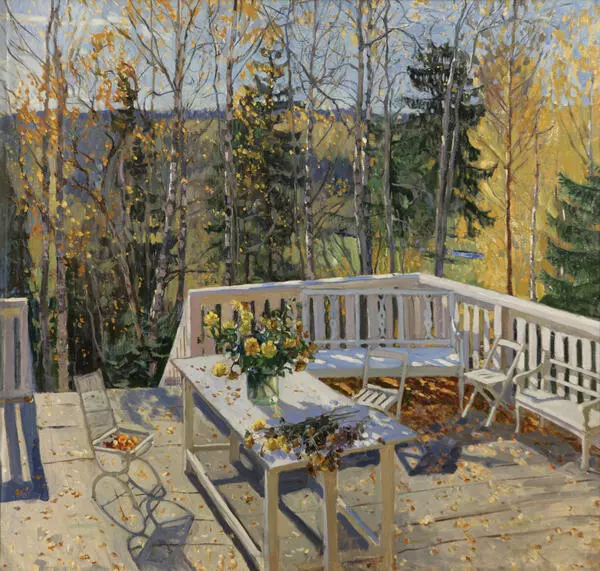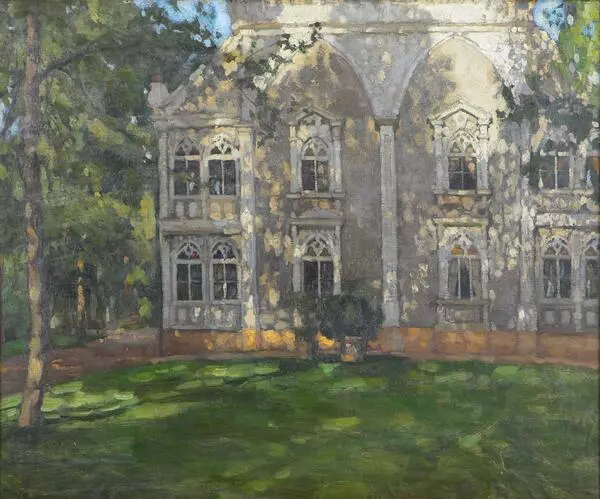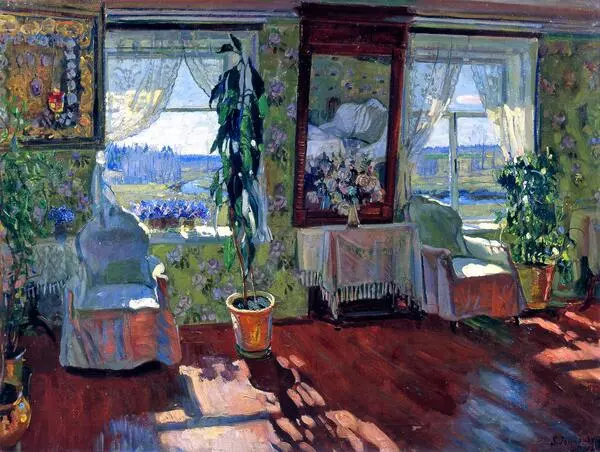The artist Stanislav Yulianovich Zhukovsky, who created the painting “Interior”, was a representative of Russian landscape painting of the late 19th — early 20th century.
The artist was born in 1873 into a noble family in the Staraya Volya estate in Grodno Governorate. Stanislav Zhukovsky’s mother, Maria Verzhbitskaya, was educated in France and devoted her life to her children. She taught Stanislav foreign languages. The boy also practiced music and drawing.
At the Real School in the city of Bialystok he was mentored by Sergei Yuzhanin, a young teacher, graduate of the Stroganov School and a Russian artist who mostly painted views of Italy. He advised Zhukovsky to continue studying fine arts.
On the advice of his teacher, in 1892 Stanislav Yulianovich entered the Moscow School of Painting, Sculpture and Architecture. His teachers there were the famous artists who belonged to the movement of Peredvizhniki — Abram Arkhipov and Konstantin Savitsky. He also studied in the workshop of the landscape painter Isaak Levitan.
During his student years, the artist actively participated in exhibitions. The public and art critics gave positive reviews of his paintings. The Moscow collector Pavel Tretyakov purchased the painting “Spring Evening” for his gallery at one of the exhibitions.
After finishing the school, Stanislav Zhukovsky became a popular painter. In 1906, he opened his painting and drawing studio in Moscow. The poet Vladimir Vladimirovich Mayakovsky was among the students of this studio.
The early work of Zhukovsky was greatly influenced by Impressionism, a new trend in the art of the time. The artist painted a lot from life and practiced plein air painting.
In the 1910s, the master introduced a new theme in his work — the interiors of manor houses with spacious rooms and rich décor. The artist traveled extensively in the middle part of Russia and visited noble estates and old merchant mansions. He painted the interiors of these houses along with nature. His paintings showed views of gardens and parks from the windows.
The painting “Interior” from the museum’s
collection refers to the theme of interiors of old manor houses. It depicts a
decorative ensemble of the interior items and furniture. The canvas features
elements of everyday life typical of the noble class: there is a portrait
hanging on the wall and exquisite furniture in the room.




